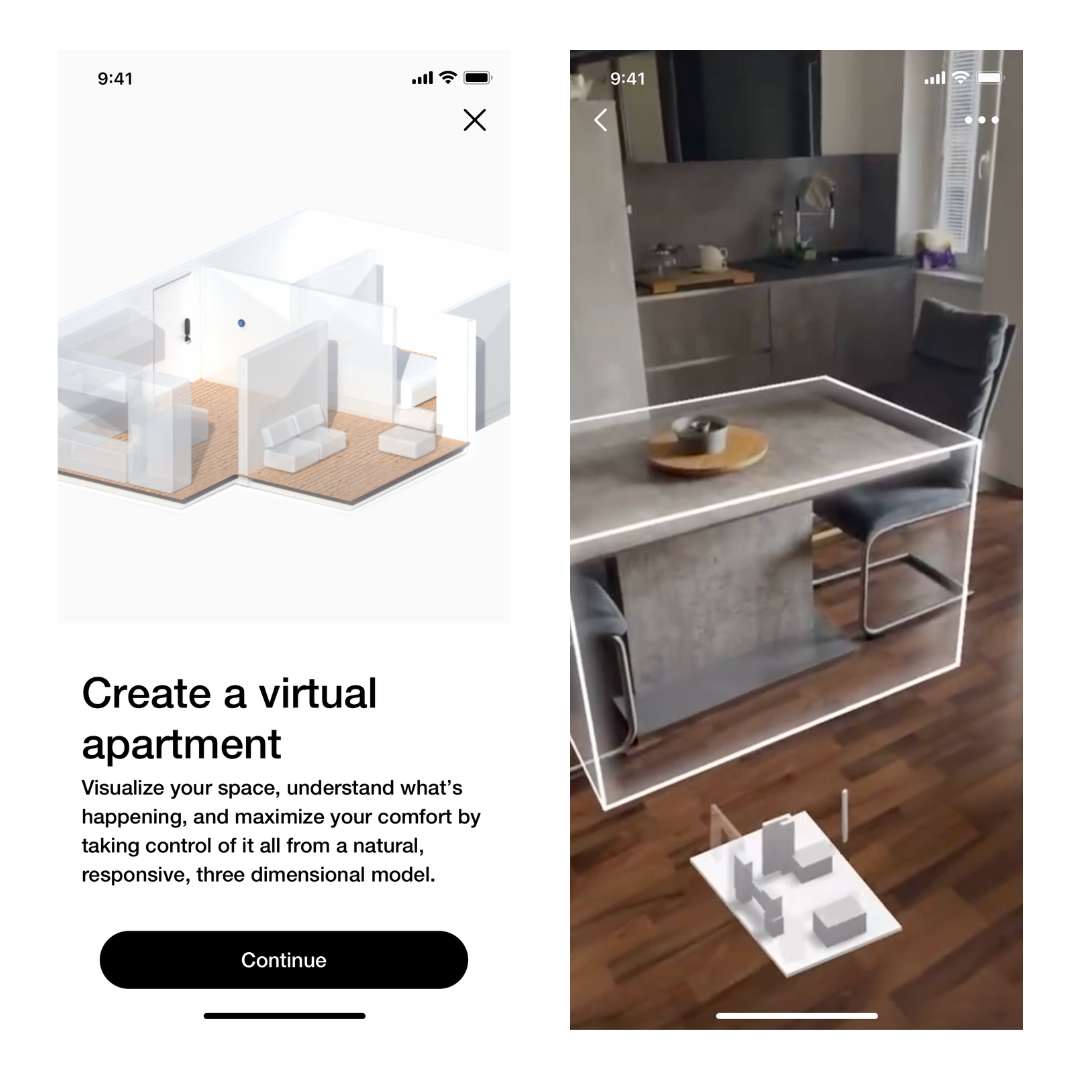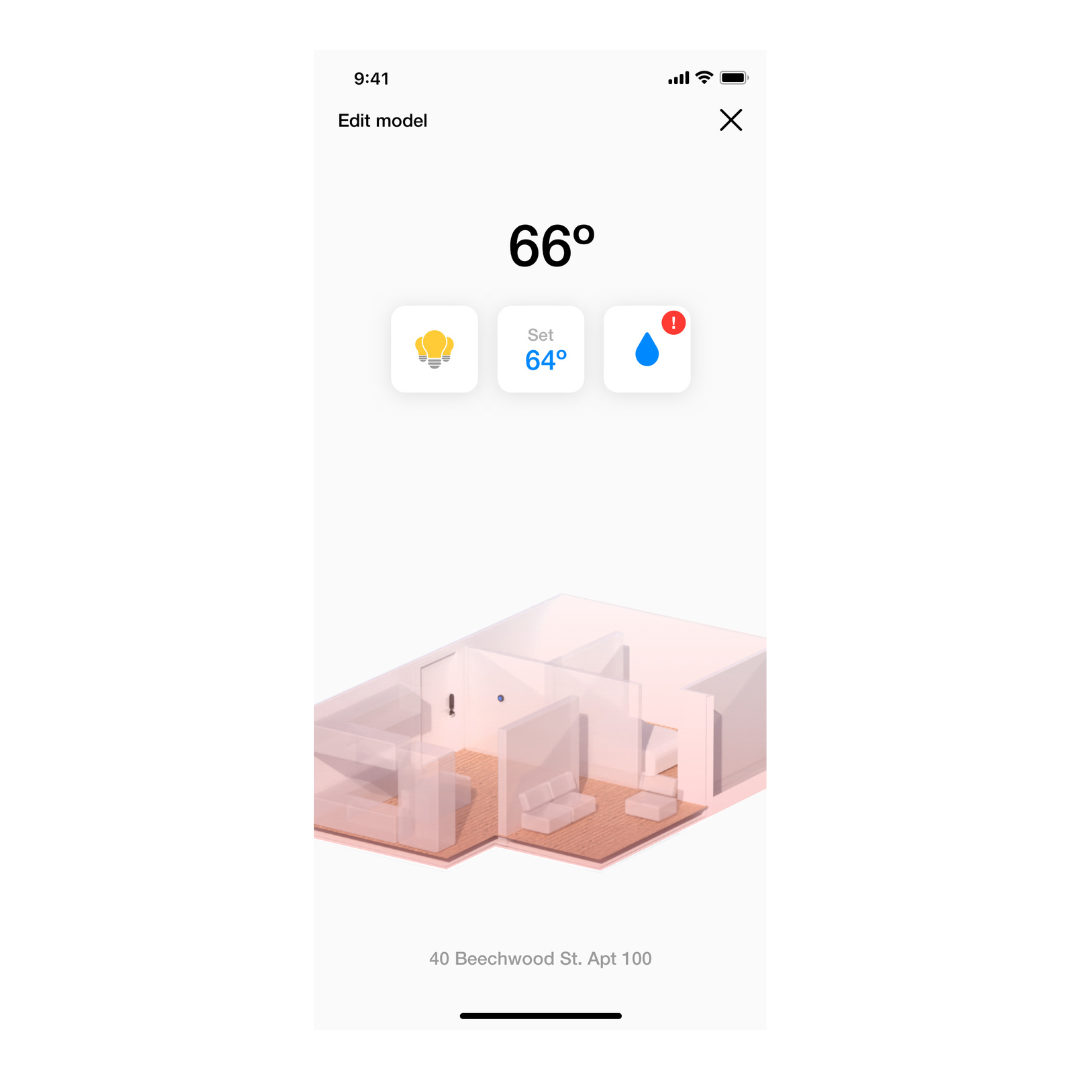Imagine this scenario: You've just settled into your couch after a long day, only to realize that you've left the kitchen light on. Rather than having to drag yourself off the comfy couch, what if you could simply tap into an app and not just turn off the light, but also visualize the effect in real time? This isn't science fiction, but the power of Augmented Reality (AR) in smart home management, and we're thrilled to be at the forefront of this revolution.
We've always been passionate about harnessing the potential of emerging technologies. Our latest endeavor, a collaboration with Latch, echoes this ethos and takes it a step further. We've integrated cutting-edge AR features into their smart home application, creating a platform where users can interact with their homes in ways never possible before.
This AR solution immerses users in a 3D representation of their living spaces. Changes in the environment, such as lighting or temperature, are visualized in real-time, offering a deeper, more intuitive level of engagement. Now, let's pull back the curtain and share how we brought this exciting vision to life.
Utilizing LiDAR and RoomPlan: The Heart of AR
LiDAR scanning technology and Apple's RoomPlan formed the building blocks of our AR solution. LiDAR (Light Detection and Ranging) sends out laser pulses, measuring the time taken for the light to bounce back after hitting an object. This information translates into highly accurate three-dimensional data about the surroundings, making LiDAR instrumental in creating detailed digital maps.
When we merged this technology with RoomPlan, we could generate comprehensive 3D floor plans, mapping room dimensions and even furniture placement. This dual-technology approach allowed us to digitally recreate the user's living environment, setting the stage for an immersive AR experience. Imagine stepping into a digital twin of your room, accurate down to the smallest detail. That's the level of precision we've strived for in this solution.

Immersive Visualization with USDZ Files
Having captured the spatial data, the challenge was to convert it into a visually engaging AR environment. Here, USDZ files came into play. What are USDZ files? The USD acronym stands for Universal Scene Description. While the USDZ extension variation just means that it is a zip-compressed USD file, hence the Z in the name. This 3D file format can store complex 3D models with high precision, including textures, colors, and even animations.
By using USDZ files, we created a catalog of detailed 3D models of each room and the objects within. This catalog served as a visual database for the app, enabling users to navigate and interact with a strikingly realistic virtual representation of their home, mirroring their real-world environment.
SceneKit: Illuminating Interactions
The next step was to breathe life into these 3D models, and SceneKit proved to be the perfect tool. Apple's robust 3D graphics API, SceneKit, excels in simulating lighting and shadow effects, adding depth and realism to digital environments.
Our team pushed SceneKit's capabilities to their limits, creating dynamic lighting effects that change in real-time with the user's smart home lighting system. This means that as users dim or brighten their actual lights, they see their virtual environment respond identically, further enhancing the immersive AR experience.
The journey with Latch has been a testament to the transformative power of AR in redefining smart home management. By leveraging technologies like LiDAR, RoomPlan, USDZ files, and SceneKit, we've created a truly immersive, interactive, and visually striking experience for users.
Elevating User Experience: Interactive Thermostat and Furniture
Taking the user experience to new heights, we introduced an innovative interactive thermostat feature within the app. Users can now visualize changes in room temperature as the colors change on the 3D virtual walls—red indicating warmth and blue suggesting a cooler temperature.

In addition, we implemented a streamlined approach to furniture visualization. Users have the flexibility to hide or display virtual furniture models within the 3D virtual environment. This flexibility allows users to declutter their virtual space as needed, offering a customizable and engaging user experience.
In conclusion, this project marks a significant step in our journey to redefine smart home management through the power of AR. Our work with Latch showcases the immense potential of AR for enhancing user interaction and creating smarter homes. As we continue to innovate and push boundaries, we invite you to join us in this exciting journey towards the future of home automation!
